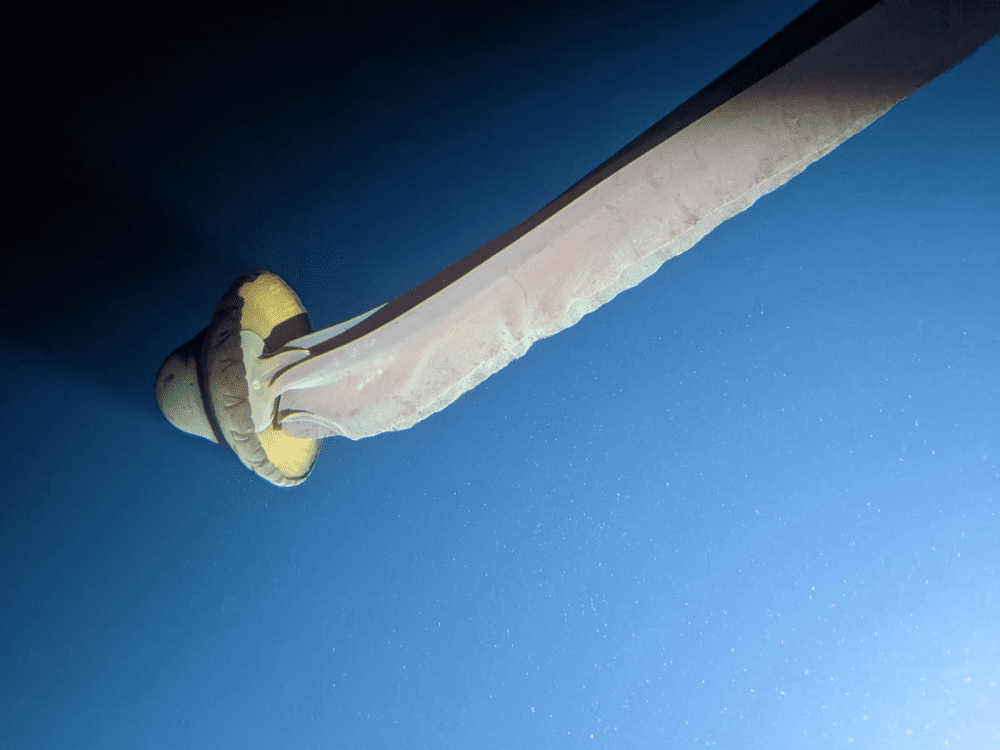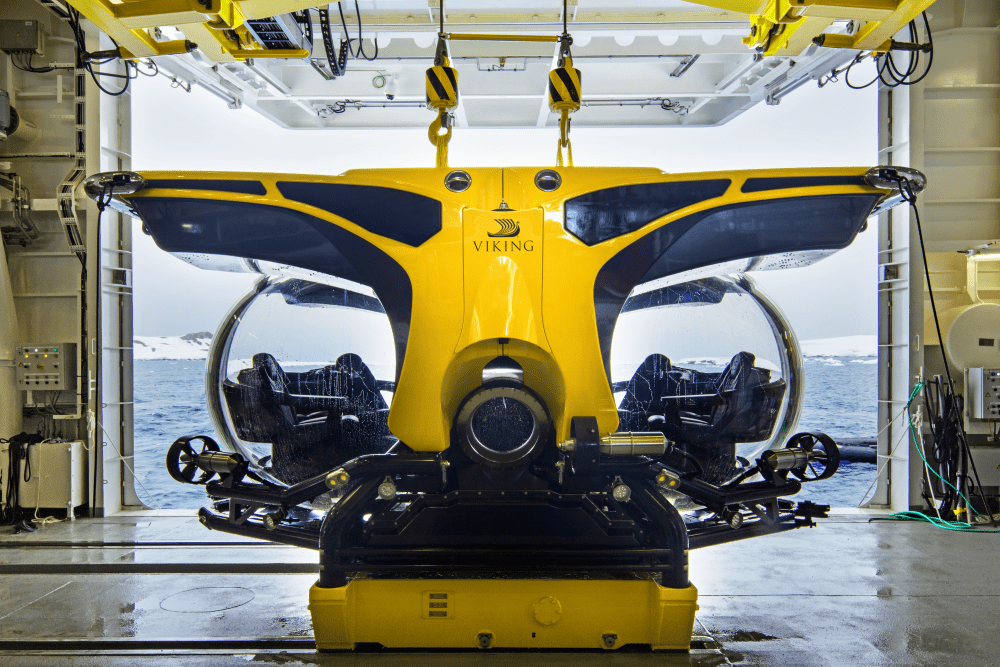A mystery from the deep just got a little bit less mysterious thanks to the first scientific paper to arise from the Viking Expedition Team. While drifting through Antarctic waters, they spotted the scyphozoan (fancy word for jellyfish) Stygiomedusa gigantea, commonly known as the giant phantom jellyfish.
Looking a bit like an errant piece of Halloween toilet-roll teepeeing through the deep, the giant phantom jellyfish was first spotted during dives back in early 2022 in the coastal waters of the Antarctic Peninsula. These beasts really live up to their name, stretching to a gargantuan 10 meters (30 feet) in length, and yet since they were named back in 1910 only 126 encounters with S. gigantea have been recorded.
It’s no wonder then that it became the star of a paper published in the journal Polar Research of the Norwegian Polar Institute. It remarks on the new opportunities presented to ecological research by personal submersibles like those attached to Viking Octantis, the expedition vessel belonging to Viking Cruises. It’s comparable to the helping hand a boom in blackwater diving hobbyists has provided the sciences in helping researchers lay eyes on animals that are difficult and expensive to observe.

As jellies go, the giant phantom is pretty leggy, but those long bits are actually “oral arms”. Image credit: Mark Niesink
“Here, we demonstrate that personal submersibles, now increasingly deployed by the expedition cruise industry, can be vessels of opportunity for biological research in the polar regions,” wrote the paper’s authors.
“We describe direct observations of the rarely encountered scyphozoan Stygiomedusa gigantea at water depths of 80–280 m [262-919 feet] in Antarctic Peninsula coastal waters as an example of the potential that personal submersibles present for the scientific community, and we outline possible research avenues for utilizing these platforms in the future.”
The giant phantom jelly is thought to lurk anywhere from the water’s surface to a depth of 6,665 meters (21,900 feet) feeding on plankton and small fishes. Its giant bell (that bulbous bit at the top) can be a meter (3.3 feet) across and drags along four oral arms for feeding.

Personal submersibles could help science access more of the deep. Image courtesy of Viking
Viking’s expeditions see visiting researchers join a 36-person team as they guide guests through their scientific work with excursions and lectures. The Viking Expeditions currently take place across two vessels, Viking Octantis and Viking Polaris.
“During each voyage, our guests participate in real, significant science,” said Dr Damon Stanwell-Smith, Head of Science and Sustainability at Viking, in a statement emailed to IFLScience.
“Our scientific approach centres on having the platform to explore with the personnel to interpret what is found, and we believe this is the first of many scientific papers that will result from research conducted on board Viking expedition vessels.”
The observations of S. gigantea are published in the journal Polar Research.
Source Link: Rare Giant Phantom Jellyfish Reaching 10 Meters Long Caught On Camera